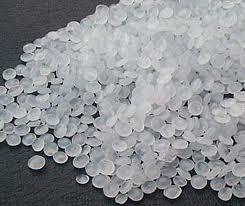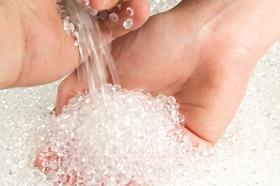- europages
- >
- Polymers
- >
- LITCHEMA, UAB
- >
- products
LITCHEMA, UAB - Best Partner for Polyethylene Polystyrene PVC Polypropylene LLDPE LDPE HDPE MDPE PP
Lithuania
Manufacturer/ Producer


LITCHEMA, UAB
Lithuania
Polyethylene LDPE has a high degree of short and long chain branching. It is one of the most simplest and common polymer. It has, therefore, less trong intermolecular forces as the instantaneous-dipole inducted-dipole attraction is less. This results in a lower tensile strength and increased ductility. LDPE is created by free radical polymerization. The high degree of branching with long chains gives molten LDPE unique and desirable flow properties. LDPE is used for both rigid containers and plastic film applications such as plastic bags and film wrap. LDPE Polyethylene are the most commonly industrially produced plastics. The various types of polyethylene are labelled according to their density. Low-density polyethylene, i.e. polyethylene with a density of between 0.91 to 0.94 g/cm³, usually referred to as LDPE. LDPE is mainly used for packaging products.
Request for a quote
LITCHEMA, UAB
Lithuania
Linear low density polyethylene LLDPE is a substantially linear polymer polyethylene, with significant numbers of short branches, commonly made bycopolymerization of ethylene with longer-chain olefins. Linear low-density polyethylene differs structurally from conventional low-density polyethylene because of the absence of long chain branching. LLDPE has penetrated almost all traditional markets for polyethylene, it is used for plastic bags and sheets, plastic wrap, stretch wrap, pouches, toys, covers, lids, pipes, buckets and containers, covering of cables.
Request for a quote
LITCHEMA, UAB
Lithuania
Polyvinylchloride (PVC), is a theermoplastic polymer. It is a vinyl polymer constructed of repeating vinyl groups (ethenyls) having one of their hydrogens replaced with a chloride group. Polyvinylchloride (PVC) is the third most widely produced plastic after polyethylene and polypropylene. PVC is widely used in construction because it is cheap, durable, and easy to assemble. PVC production is expected to exceed 40 million tons by 2016. PVC intrinsic properties make it suitable for a wide variety of applications. It is biologically and chemically resistant, making it the plastic of choice for most household sewerage pipes and other pipe applications where corrosion would limit the use of metal.With the addition of impact modifiers and stabilizers, it becomes a popular material for window and door frames. By adding plasticizers, it can become flexible enough to be used in cabling applications as a wire insulator. It is also used to make vinyl records.
Request for a quote
LITCHEMA, UAB
Lithuania
Polypropylene ( PP ) is thermoplastis copolymer used in a wide variety of different applications including packaging, textiles, plastic parts and reusable containers. It is defined by a density range of 0.946 g/cm3 for crystalline. PP is resistant to many chemical solvents, bases and acids. Polypropylene is most commercial isotactic and has an intermediate level of crystallinity between that of low-density polyethylene (LDPE) and high-density polyethylene (HDPE). Polypropylene is normally tough and flexible, especially when copolymerized with ethylene. This allows polypropylene to be used as an engineering plastic, competing with materials such as ABS. Polypropylene is reasonably economical, and can be made transucent when uncolored but is not as readily made transparent as polystyrene, acrylic, or certain other plastics.
Request for a quote
LITCHEMA, UAB
Lithuania
Polystyrene (PS) is an aromatic polymer, made from the aromatic monomer styrene, a liquid hydrocarbon that is commercially manufactured from petroleum by the chemical industry. Polystyrene is one of the most widely used kinds of plastic. Polystyrene is a thermoplastic substance, which is in solid (glassy) state at room temperature, but flows if heated above its glass transition temperature and becomes solid again when cooled. Pure solid polystyrene is a colorless, hard plastic with limited flexibility. It can be cast into molds with fine detail. Polystyrene (PS) can be transparent or can be made to take on various colors. The chemical makeup of polystyrene is a long chain hydrocarbon with every other carbon connected to a phenyl group.
Request for a quote
LITCHEMA, UAB
Lithuania
HDPE – high density polyethylene is defined by a density of greater or equal to 0.941 g/cm3. HDPE has a low degree of branching and thus stronger intermolecular forces and tensile strength. HDPE can be produced by chromium/silica catalysts, ziegler-natta catalysts or metallocene catalysts. The lack of branching is ensured by an appropriate choice of catalyst and reaction conditions. HDPE is used in products and packaging such as milk jugs, detergent bottles, margarine tubs, garbage containers and water pipes. High-density polyethylene (HDPE) or polyethylene high-density (PEHD) is a polyethylene thermoplastic made from petroleum. It takes 1.75 kilograms of petroleum (in terms of energy and raw materials) to make one kilogram of HDPE. HDPE is commonly recycled, and has the number “2” as its recycling symbol.
Request for a quoteManufacturer/ Producer
Savanoriu pr. 166
LT-44149 Kaunas - Lithuania